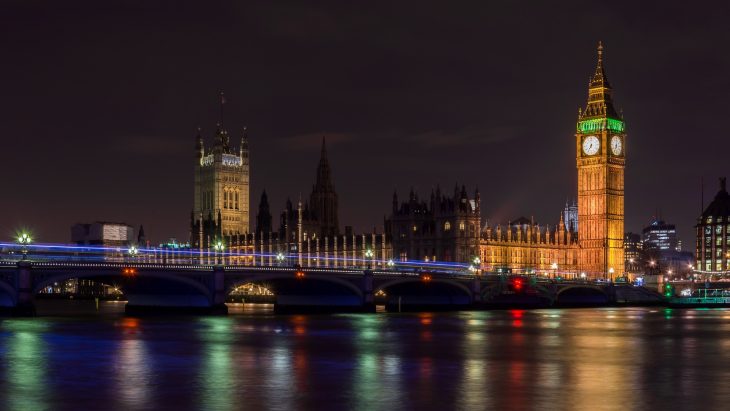
As the home of the Big Ben, the London Eye, and St. Paul’s Cathedral, London is certainly a stunning place to behold. Aside from fish and chips and tea, London boasts centuries’ worth of rich history and culture. The city has been the subject of intrigue for millennia and now remains one of the most influential cities in the world. Learn more about one of the world’s most popular destinations with these amazing London facts.
- Romans first settled on the City of London in 47 CE.
- As of 2018, London had a population of 8,961,989 people, making it the third most populous city in Europe.
- London’s total gross value added (GVA) in 2018 was £487 billion ($624 billion).
- Its population is notably diverse, together speaking more than 300 languages.
- London has 33 local government districts: 32 boroughs and the City of London.
- London is the capital city of England and the United Kingdom.
- It is also the United Kingdom’s largest city.
- London is one of the world’s most visited cities.
- Its residents are often referred to as “Londoners”.
- The large city sits along the banks of the River Thames.
- London sits in the southeastern region of England.
- The mayor of London and the London Assembly govern the city.
- London has the highest concentration of higher education institutes (such as colleges and universities) in Europe.
- The time zone of London is set in Greenwich Mean Time (GMT). In the summer, however, it adjusts to British Summer Time (BST; GMT+1) to account for Daylight Savings Time.
- London is a polycentric city, with various core districts of around equal importance.
- From around 1831 to 1925, London was the world’s largest city.
- In 2019, this city had the highest number of ultra-high-net-worth individuals among all the cities in Europe. These individuals each have a net worth of more than 30 million US dollars.
- London Zoo, the world’s first public zoo, opened in London on April 27, 1828.
- London’s most popular tourist attractions include the British Museum, Buckingham Palace, the Tower Bridge, and Big Ben.
- There are currently 32 UNESCO World Heritage Sites in the UK and the British Territories. The Greater London area is home to four of these World Heritage Sites.
The origin of the name “London” is unclear.
London is a name that’s as ancient as the city itself, with many different explanations regarding its origin. Dating back to the first century CE, Roman tablets already included the word Londinio, which translates to “in London”. Typically, early sources referred to London in many different variations, such as the Latin Londinium, Old English Lunden, and the Welsh Llundein.
While used in many languages, the origins of the word remain unclear. One popular explanation comes from Geoffrey of Monmouth’s 1136 publication, Historia Regum Britanniae. The story claims that the name originated from the ancient King Lud, who supposedly conquered the city and named it Kaerlud. However, other historians suggest that the name stems from Celtic origins. Directly translating to “sink” or “cause to sink,” the Celtic word referenced how the place experienced frequent flooding from the River Thames.
Humans inhabited some parts of London as early as 4,800 B.C.E.
Although Romans settled in the City of London in the common era, one of the most interesting London facts is that humans inhabited it as far back as 4,800 B.C.E. and 4,500 B.C.E. In recent research, archaeologists found artifacts of human settlements dating back to the Neolithic period and the Bronze Age. These artifacts included foundations and bridges that recovered near the Vauxhall Bridge in central London.
London has the second-highest population of immigrants of all cities in the world.
According to a census in 2011, more than a third of Londoners were actually foreign-born. With an immigrant population of 2,998,264 people, London is the city with the second-highest population of immigrants in terms of absolute numbers. That said, it comes second only to New York City in the entire world.
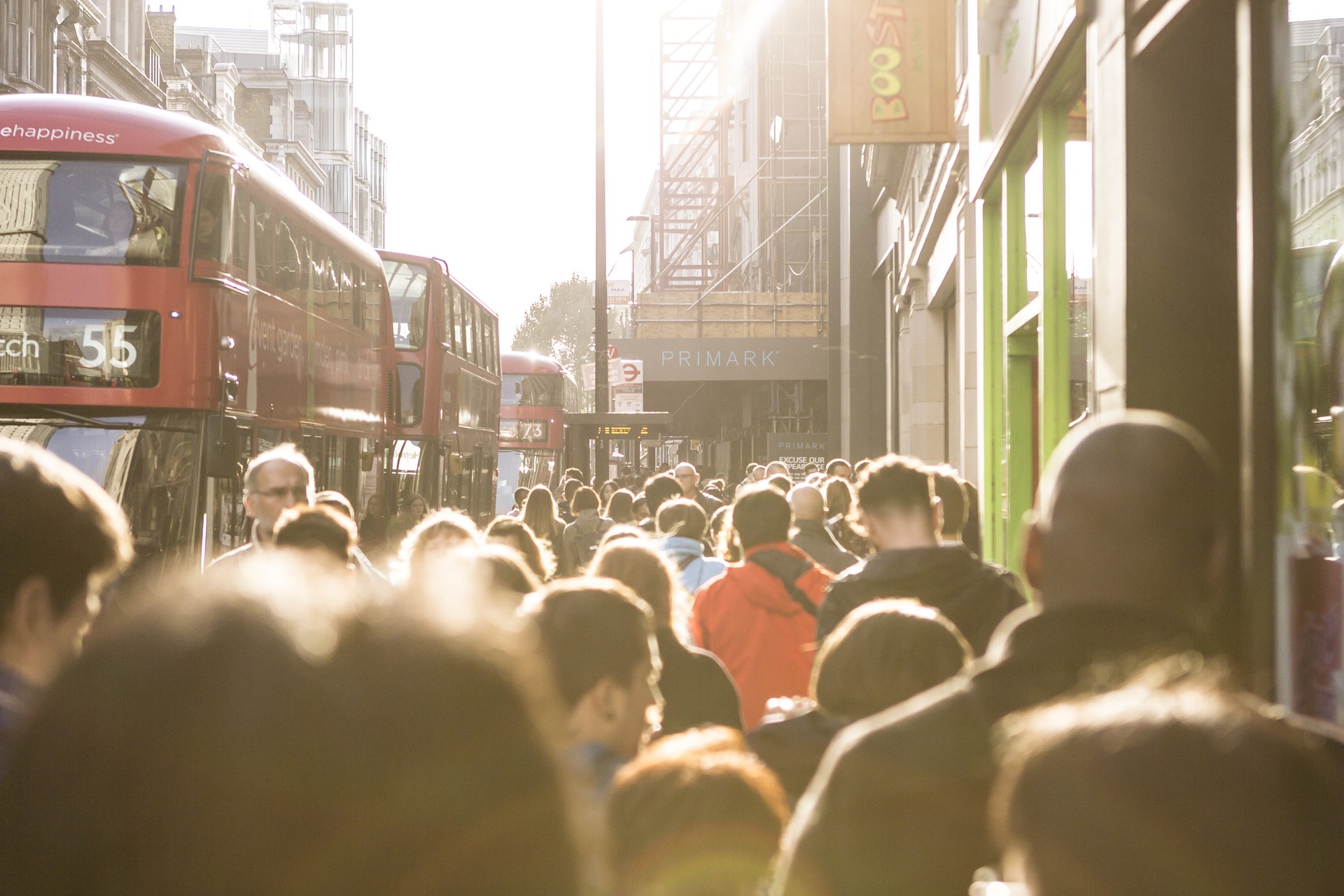
A skyscraper in London reflected sunlight so intensely that it melted parts of a car.
Popularly known as the Walkie Talkie building, this structure at 20 Fenchurch Street certainly has a unique shape. An amazing fact about this London skyscraper is that its shape allows its glass to act as a concave mirror, which could focus the rays of sunlight onto a nearby street. As a result, the sunlight could even melt parts of a car parked nearby and damage parts of a shop in the vicinity.
This event garnered significant media attention and earned the building some nicknames such as the “Walkie Scorchie” or the “Fryscraper”. Fortunately, workers of the building have now installed a “sunshade” on its windows to deflect the sun’s rays.
The City of London is actually quite small.
Among the more confusing London facts is that London differs from the City of London. Spelled with a capital C, the City of London describes a historical city that near the center of the modern city known as London. While London is quite a big city, the City of London only spans around 1.2 square miles.
Simply put, the City of London refers to the exact area that the early Romans first inhabited. With its historical dimensions retained, locals also refer to the City of London as the “Square Mile.”
The City of London has its own authority and laws.
Although the City of London lies within the metropolis of London, it acts quite differently from the 32 boroughs of London. Generally, the City of London operates as a distinct ceremonial county with its own governance, laws, customs, and even its own flag.
Additionally, it has its own local authority in the form of the City of London Corporation. Headed by the Lord Mayor of the City of London, this local authority also provides its police force.
The University of London was the first university in the UK to grant degrees to women.
Among the first in the United Kingdom to grant higher education rights to women, London is quite a progressive place. In 1878, the University of London became the first in the UK to open and grant its degrees to women. However, Bedford College opened its doors to women in higher education earlier than that. In 1849, Bedford accepted women to study in college, making it the first in the world to offer higher education to women.
Big Ben is the official name of the bell, not the tower.
One of the most important London facts you have to remember before you visit is that the iconic clock tower attached to the Palace of Westminster is not the Big Ben. The name Big Ben officially refers to the bell inside the tower, and not the tower itself. However, in more common usage, the name also extends to the tower.In the past, people referred to the tower as the “Clock Tower.” Its official name was then changed to “Elizabeth Tower” in 2012, marking the Diamond Jubilee of Queen Elizabeth II. Although it’s one of the most-visited tourist attractions in London, the interior of the Elizabeth Tower isn’t open to overseas visitors.
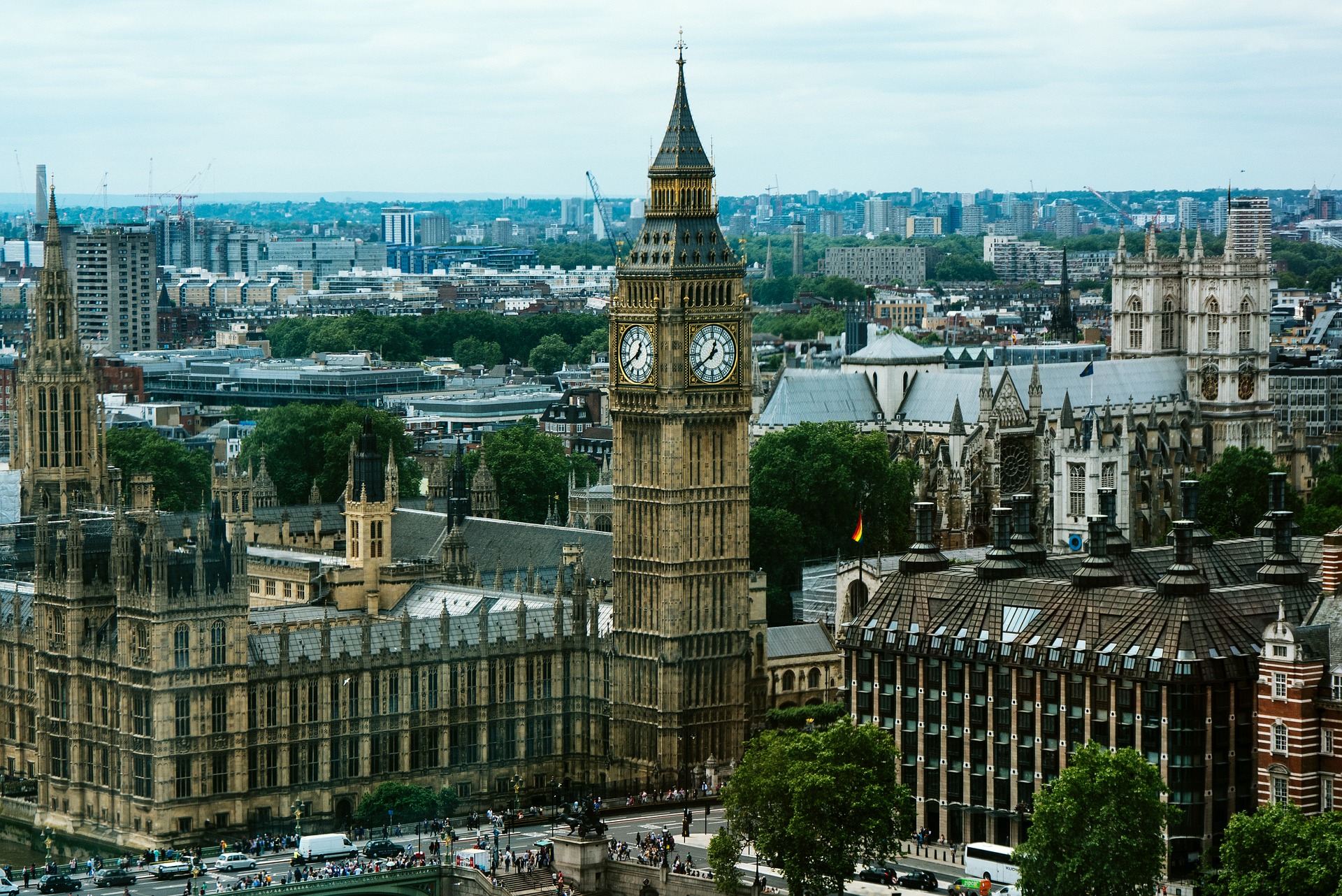
A “Little Ben” also exists in London.
Perhaps a more hidden gem of London is “Little Ben,” or a miniature version of the Elizabeth Tower. Erected in 1892, Little Ben now stands at the intersection of Victoria Street and Vauxhall Bridge Road in Westminster, Central London.
Contrary to popular belief, it’s not illegal to die in Parliament.
One of the widely-misquoted London facts is a myth that states how it’s illegal to die in the Parliament Houses in London. According to authorities, however, such a law does not exist. Another popular rumor claims that it’s illegal for commoners to die in a Royal Palace, but this is also a myth. On the contrary, anyone who dies in a Royal Palace is eligible for a state funeral.
Wearing a suit of armor in the Houses of Parliament is illegal.
If you’re ever planning to enter the Houses of Parliament in a full suit of armor, it’s best to think twice before doing so. Unlike death in Parliament, this law is not a myth. First enacted in 1313, this law prohibits wearing armor to all Parliaments, Treatises and other Assemblies in London. Truly among the most absurd but fun London facts!
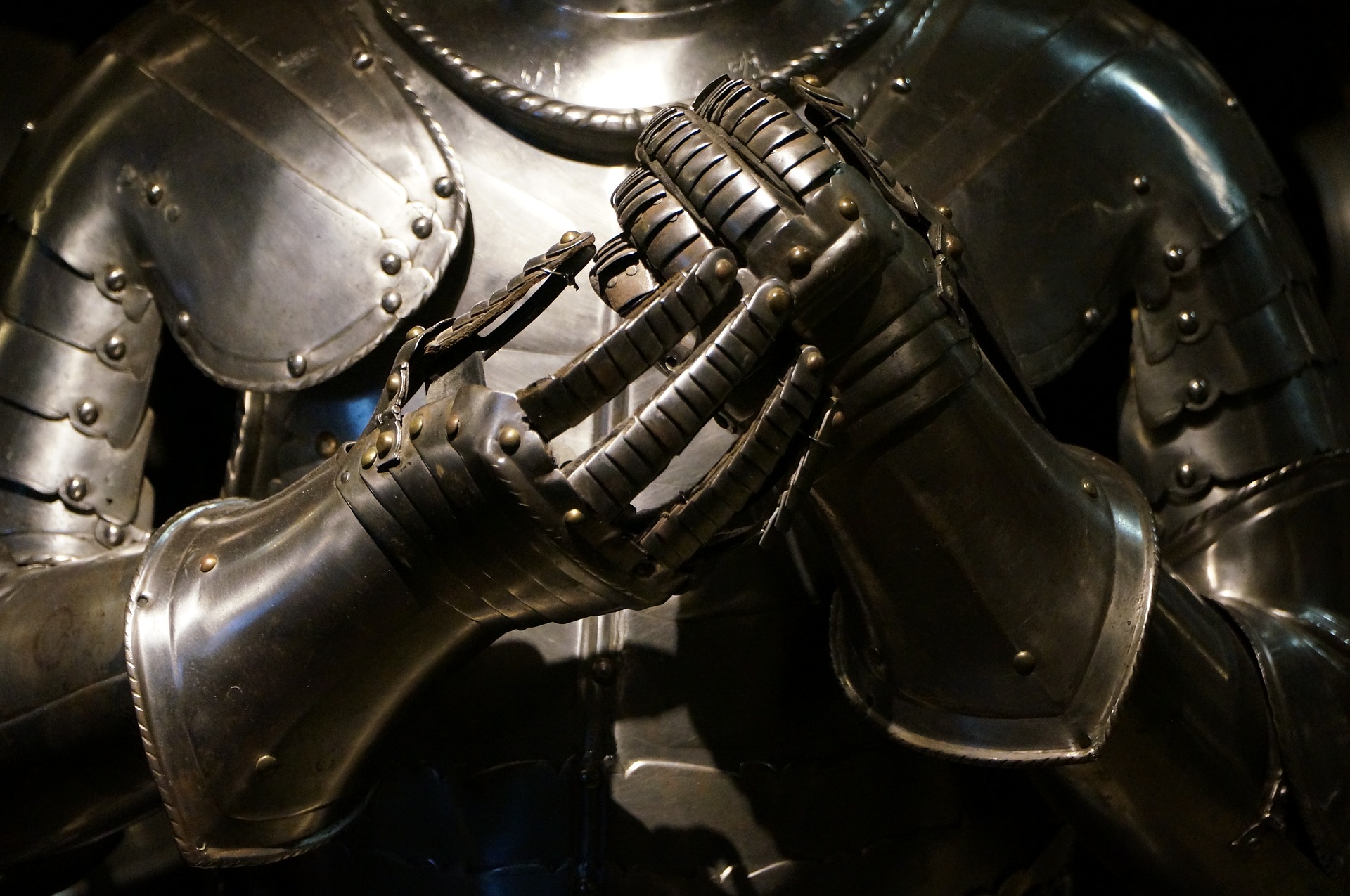
Drivers of black cabs in London undergo rigorous training.
When in London, a popular way to get around is through riding a black cab or London taxi. What’s great about these London taxi drivers is that they never have to rely on GPS – they have the whole city memorized in their heads! Before officially earning their licenses as black cab drivers, they have to pass an extremely difficult test, ominously called The Knowledge.
For this test, they’re required to know every major place in London, every single street, as well as the fastest possible routes to get there. It can take up to 3 years to study these routes, so you can always trust that they know the city like the back of their hands!
London lost a huge chunk of its population to the Great Plague in the early 17th century.
The Great Plague of London lasted from 1665 to 1666, as the last outbreak of the bubonic plague. Taking place near the end of the centuries-long Second Pandemic, it claimed the lives of around 80,000 to 100,000 people in 18 months. If you can’t picture that, this death toll makes up a sixth to almost a quarter of London’s entire population at the time.
The City Corporation ordered the killing of cats and dogs during the Great Plague.
During the Great Plague, the City Corporation decided that desperate times called for desperate measures. In an attempt to stop the spread of the disease, the City Corporation ordered the killing of cats and dogs in the City of London in fear of the house pets carrying the deadly disease.
In total, The City Corporation ended up killing around 40,000 dogs and 200,000 cats. However, these pets died for nothing, as it was actually rats that carried the bacteria-infested fleas that spread the bubonic plague.
The Great Fire of London did not end the Great Plague.
There is another popular myth about London that states that the Great Fire put an end to the Great Plague. The Great Fire of London occurred in 1666, just as the Great Plague was in decline. Many believe that the Great Fire that devastated the City of London ended the lives of the disease-spreading rats in the city and consequently put an end to the plague. While some historians agree with this claim, some suggest that the plague had already been subsiding before the Great Fire even happened.
There were only six verified deaths during the Great Fire of London.
Destroying around 70,000 homes in the City of London, it’s no secret that the Great Fire of London was one of London’s greatest tragedies. However, one of the most interesting London facts is that only six death were verified during the Great Fire. Some historians believe that the death count could have been higher, but the fire may have destroyed the other bodies.
The Aldgate Underground Station was once a mass grave.
With tens of thousands of people dying from the plague back then, it’s no surprise that mass graves or “plague pits” exist in various parts of London. In fact, one such plague pit was found at the site of the Aldgate Underground Station. This made the construction of the train station quite complicated, because the site served as the burial ground of around 1,000 corpses. Truly one of the London facts you can’t help but remember.
At 443 feet tall, the London Eye is the tallest Ferris wheel in all of Europe.
Standing on the South Bank of the River Thames in London is the famous London Eye, which is the tallest Ferris wheel in Europe. The London Eye stands at 443 ft (135 m) tall, with the wheel diameter of 394 ft (120 m). From 2000 to 2006, it was the tallest Ferris wheel in the world, and still remains one of the most visited places in London to this day. Interestingly, it was not the first big Ferris wheel in London. Instead, this title belongs to the Great Wheel or Gigantic Wheel, which operated from 1895 to 1906.

Tourists used to visit the Bethlem Royal Hospital to observe people with mental illnesses.
This is one of the more controversial London facts that you have to know. Aside from St. Paul’s Cathedral and the London Zoo, one of the most popular attractions in London in the 16th to the 18th century was actually a psychiatric hospital. The Bethlem Royal Hospital, or more popularly, Bedlam, is a psychiatric hospital that housed people with mental illnesses.
Oftentimes, its patients behaved in unpredictable manners that thousands of paying tourists came to observe like animals in a zoo. This scandalous historical past of the hospital inspired many horror films, books, and TV series.
The Queen does not have to ask permission from the Lord Mayor to enter the City of London.
Because the City of London has its own rules and customs, there is a pervasive myth that even the ruling monarch can’t enter the City of London without the permission of the Lord Mayor. However, the Queen follows the tradition of announcing her arrival to the Lord Mayor before entering the City.
The Shard in London is the tallest building in the United Kingdom.
This is one of the London facts you can’t miss if you’re planning a tour in the city. As the tallest building in the United Kingdom, The Shard stands in Southwark, London. Towering at 1,016 ft (310 m) tall with 72 habitable floors and an observation deck, The Shard is definitely a must-see. a
Its construction started in 2009 and finished in 2012, and it has been the tallest building in the UK ever since. The Shard overtook One Canada Square, which has been the tallest building in the UK from 1990 to 2012.
The Kew Gardens have the most diverse collection of plants and fungi in the world.
If you’re a lover of plants and mushrooms, then this is one of the London facts you’d be delighted to know. The Kew Gardens in southwest London have the most diverse collection of plants and fungi in the world. Established in 1840, Kew Gardens houses more than 50,000 species of plants and fungi.
Their herbarium also contains more than 8.5 million preserved specimens of plants and fungi — making it one of the largest in the world. In fact, the United Nations Educational, Scientific and Cultural Organization (UNESCO) officially listed this site as a World Heritage Site in 2003.
The Royal Observatory in Greenwich defines the Greenwich Mean Time and Prime Meridian.
Another one of London’s famed UNESCO World Heritage Sites is Maritime Greenwich. It houses the National Maritime Museum and the Royal Greenwich Observatory. Historically, the Royal Observatory played an important role in astronomy and navigation.
Across the globe, it serves as the basis for the Prime Meridian. This site also defines the Greenwich Mean Time (GMT) and its globally-used successor, the Coordinated Universal Time (UTC).
The London Zoo was home to the real-life Winnie-the-Pooh.
One of the most interesting London facts is that the real-life Winnie the Pooh lived in the London Zoo. During World War I, the Canadian soldier and veterinarian Lt. Harry Colebourn bought a young black bear cub from a trapper in Ontario, Canada. He named the bear “Winnipeg” or “Winnie” for short after his hometown of Winnipeg, Manitoba. Winnie went with Colebourn all the way to England, with Colebourn deciding to put her in the custody of the London Zoo before leaving for France.
Originally, Winnie was supposed to go to the Assiniboine Park Zoo back in Winnipeg, but Winnie became such a well-loved member of the London Zoo that Lt. Colebourn let her stay there. Because Winnie was a gentle and tame bear, children even got to feed her and ride on her back. This earned her a lot of fans — most notably, Christopher Robin Milne, the inspiration for the character Christopher Robin. Christopher Robin Milne even named his teddy bear “Winnie the Pooh.” Eventually, his father, A. A. Milne went on to write about the adventures of Christopher Robin and Winnie-the-Pooh.
The iconic London red buses used to come in different colors.
One of the most iconic London facts is that the city has a lot of red double-decker buses that roam its streets. Before 1907, however, the then horse-drawn buses came in all sorts of colors, reflecting different routes. It wasn’t until the London General Omnibus Company (LGOC) painted all of its buses red to make it stand out from other bus companies. As the LGOC eventually became the largest bus company, the convention of painting buses red became the norm, leading to the iconic red buses of London.

A children’s hospital in London owns the rights to Peter Pan.
J. M. Barrie gave the rights to his Peter Pan works to the Great Ormond Street Hospital in 1929. Securing the rights to Peter Pan made this children’s hospital entitled to the royalties from performances and publications of Peter Pan. The copyright first expired 50 years after Barrie’s death, but the government of the UK granted the hospital a perpetual right to the royalties from all performances and publications of Peter Pan.
London used to be the capital of multiple countries at the same time.
This is certainly one of the London facts that serve as a testament to the city’s amazing diversity. During the height of WW2, London proved to be a safe haven for various governments in exile. When Germany conquered various parts of Europe, London became the temporary capital of Belgium, Poland, Norway, and France.
London isn’t as rainy as most would think.
Oftentimes, when tourists think of London, they imagine a gloomy city where it’s constantly raining. However, the city is not as rainy as most would think. Each year, the city only gets around 583.6 millimeters of precipitation. This means that rainy weather would be more likely in Barcelona, New York City, Paris, and even Sydney.
London has an abundance of forests.
Because London is famous for its high-rise buildings and busy streets full of cars, it’s a bit far-fetched to think that this city is a forest. However, London is actually one of the world’s greenest cities, with around 8.3 million trees and 8.6 million people living within 600 square miles. Moreover, around 40% of the city’s surface is made up of green space or open water. The Forestry Commission also recognized London as an urban forest in 2019.
The city is home to about 10,000 foxes.
One of the most essential London facts is that the city boasts a large diversity of plants and animals. This goes for both the wooded areas and its more urban concrete jungle. On average, London is home to around 10,000 red foxes that roam the city’s streets. These foxes aren’t too shy around humans, and may sometimes live in people’s backyards. More surprisingly, there have also been incidents of foxes sneaking into the Houses of Parliament and the Buckingham Palace!
London has around 20 underground rivers.
To build the streets and various structures in the metropolis of London, people had to cover some tributaries of the River Thames and River Lea. There are around 20 underground rivers around London, with the River Fleet being the largest of the subterranean rivers of London. Today, most of these underground rivers serve important functions in the city’s sewer system.
Around 79% of the London Underground runs above ground.
The London Underground, which locals often refer to as “the Tube”, is a railway system that connects the Greater London region to various other parts of the United Kingdom. It first opened in January 1863, with its first tunnels existing underground. Now, the London Underground network spans 250 miles (402 km).
Perhaps ironically, the vast majority of the London Underground actually runs above ground. Around 198 miles (319 km) of the network runs above ground, which makes around 79% of the London Underground. How’s that for fascinating London facts?
Some parts of the London Underground have poorer air quality than the streets of London.
In 2002, a study revealed that some parts of the London Underground had an air quality around 30 times worse than the average London street. Some stations such as Northwest London’s Hampstead Station had air teeming with various air pollutants due to poor ventilation. These pollutants include microscopic particles of dust, exhaust fumes, and even pieces of fabric from the clothes of passengers.
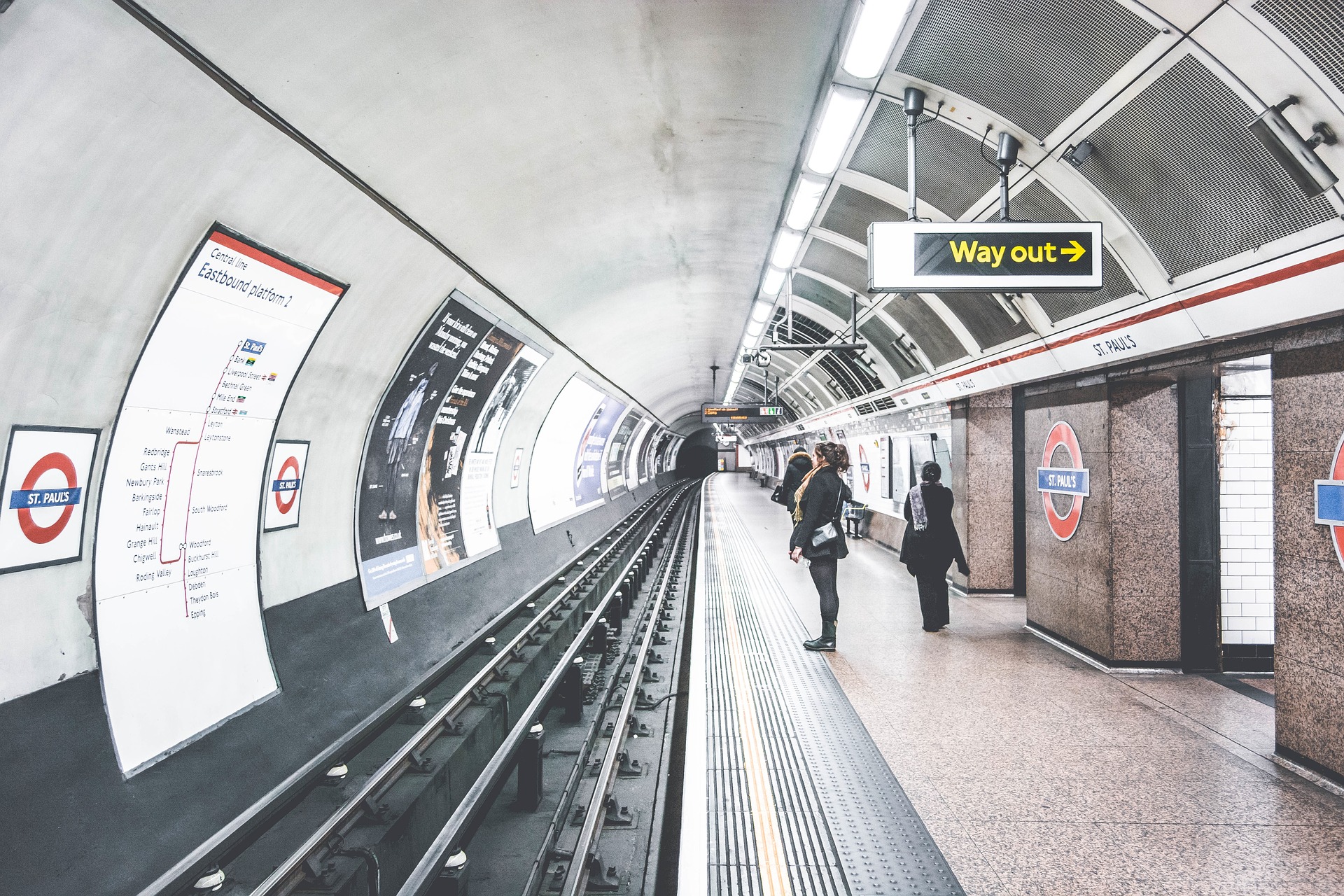
There have been five known babies born at the London Underground.
Transporting up to 5 million passengers in a single day, the London Underground is a busy transit system,. With all the people it transports daily, having someone give birth within the Tube comes as an expected occurrence. As of 2019, there have been five recorded births in the London Underground.
The most famous example of this is American television host Jerry Springer, who was born at the Highgate tube station in 1944. Even more astoundingly, he was born during the Blitz, while the underground stations served as bomb shelters.
The escalators on the Underground travel the distance of going twice around the world each week.
Every week, the escalators on the London Underground run lengths of over 49,710 miles (80,000 km). This is around twice the equivalent distance of the circumference of the Earth, which is 24,901 mi (40,075 km)! How’s that for cool London facts?
The London Underground has a subspecies of mosquito named after it.
Although the London Underground mosquito (Culex pipiens molestus) does live in the London Underground, it existed long before the construction of the railway system.
Although some scientists believe that the London Underground mosquito is its own distinct species, more recent studies show that it’s just a subspecies of the Culex pipiens mosquito. The London Underground mosquito got its name from the fact that it swarmed the Londoners seeking shelter in the London Underground during the Blitz.
Cleopatra’s Needle in London holds a time capsule with various artifacts.
Three Egyptian obelisks share the name “Cleopatra’s Needle,” and each of them stand in New York City, Paris, and London. Upon the re-erection of Cleopatra’s Needle in London in 1878, a time capsule was placed in the front of the pedestal.
The time capsule contained hairpins, a map of London, cigars, newspapers, children’s toys, British coins, a portrait of Queen Victoria, and even 12 photographs of the best-looking English women at the time.
The Great Stink plagued Central London in 1858.
In July and August 1858, Central London suffered the “Great Stink.” The intense summer heat caused the stench from the sewage in the River Thames to worsen. During this period, the Thames largely held untreated sewage.
Because of the Great Stink, however, people had to develop a much better sewage system to avoid the stench or the possible negative effects of the miasma. Eventually, civil engineer Joseph Bazalgette proposed a sewage system that put a stop to the Great Stink and the cholera outbreak that plagued London.
London had a major Gin Craze in the 18th century.
Great Britain, especially London, had a Gin Craze in the first half of the 18th century. During the Gin Craze, gin consumption skyrocketed and led to an epidemic of drunkenness among Londoners. In fact, the alcohol problem became so bad that the Parliament had to pass acts to control gin consumption. How’s that for your fun London facts?
London has six major orchestras.
If you’re a fan of orchestral music, then London is certainly the place to be. This is because London has six major orchestras — The BBC Symphony Orchestra, the London Symphony Orchestra, The Royal Philharmonic, The London Philharmonic, the Philharmonia, and the Orchestra of the Royal Opera House.
The London Underground used to have steam-powered trains.
Being the oldest metro system in the world, the London Underground has certainly gone through a lot of major changes. When the system first opened in 1863, its trains were steam-powered. The modern electric trains in the London Underground did not make their debut until 1890.
The Ayrton Light on the Elizabeth Tower lights up when the Parliament is in session.
If you’re wondering whether or not the Parliament is in session, all you’d have to do is look at the good old Clock Tower. Set above the clock face is the Ayrton Light, which lights up whenever the Parliament is in session after dark. The light was installed because of Queen Victoria – she wanted to see from Buckingham Palace if the members of Parliament were sitting.
The Great Smog of London occurred in 1952.
One of London’s nicknames, the “Big Smoke,” originates from the Great Smog of London in 1952. A major air pollution event, the Great Smog formed when a thick fog combined with coal exhausts from factories. An anticyclone also affected London, making the already-cold air largely windless. This trapped the air inside London, exacerbating the effects of the smog.
The Great Smog became the worst air pollution event in the history of the UK. It affected the city’s visibility, made hundreds of thousands of Londoners sick, and even claimed the lives of about 4,000 people. Some experts believe that the fatality count may have actually been higher, with some stating that up to 6,000 people died due to the Great Smog. Fortunately, this event eventually led to major changes in the management of air quality in London.
Living in the West End of London can be pretty expensive.
The West End of London is a major district for shopping and entertainment, making it one of the main tourist hotspots in the city. However, actually living in the West End can get quite expensive — some properties may even sell for tens of millions of pounds.
The Tower of London has been standing since the 11th century.
Among the most iconic attractions of London is the Tower of London, which is a historic tower that has been standing since the year 1066. Standing on the north bank of the River Thames in London, the Tower of London was erected as part of the Norman Conquest of England.
Because conquering it would largely mean conquering the whole country, the Tower of London is historically significant. Interestingly, the tower’s official name is quite a mouthful: Her Majesty’s Royal Palace and Fortress of the Tower of London. This tower is also among the four UNESCO World Heritage Sites of London.
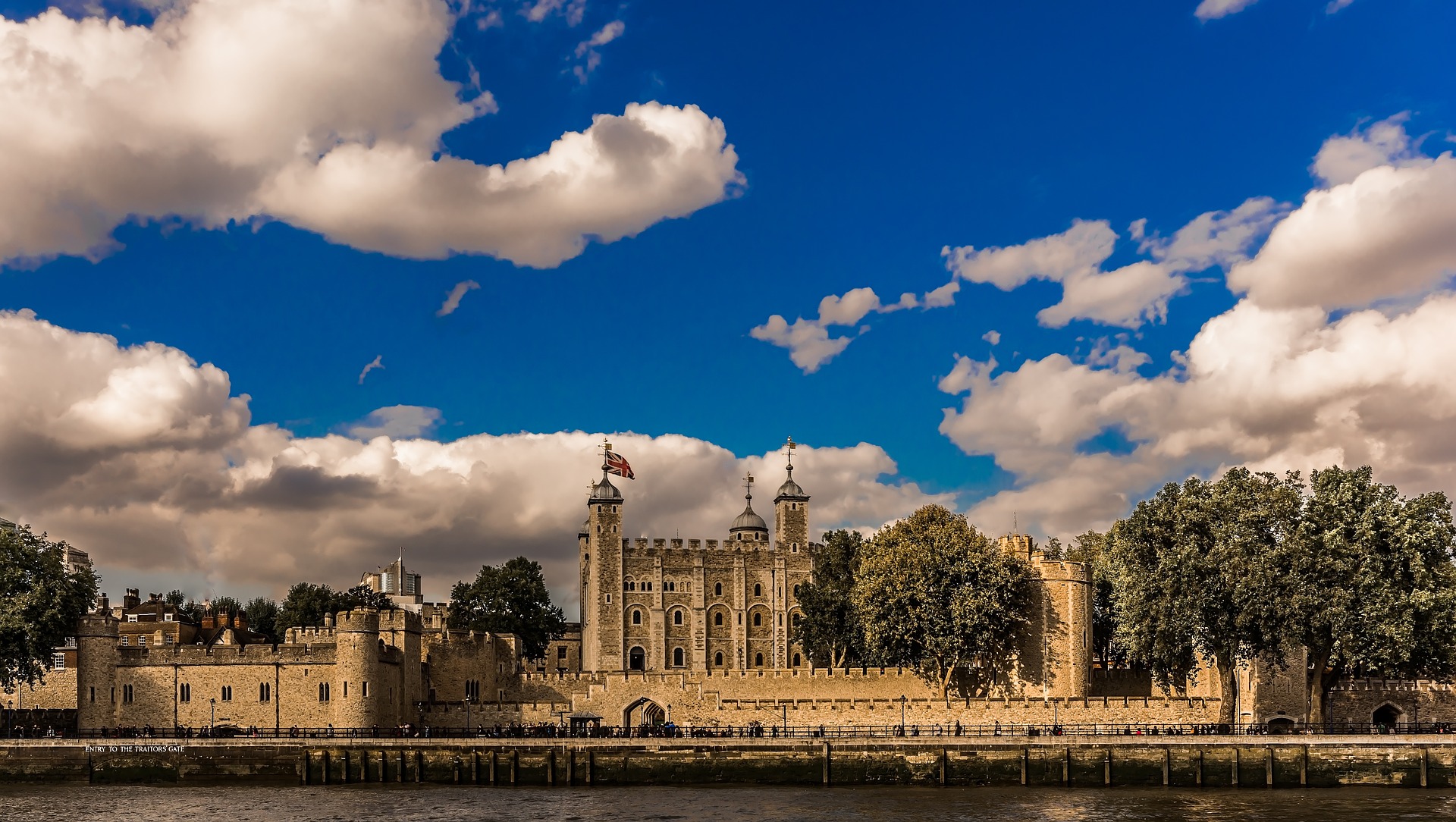
The Tower of London has historically been used as a prison and execution ground.
Among the many functions of the Tower of London, its use as a prison is one of the most notable ones. Especially during the 16th and 17th centuries, the Tower’s prison inspired the phrase “sent to the Tower.” Its most prominent prisoners during this period were Elizabeth Throckmorton, Sir Walter Raleigh, and even Elizabeth I before she became queen. The Tower of London also served as a prison and execution ground during the First and Second World Wars.
Henry III kept a polar bear outside the Tower of London.
Another one of the most interesting London facts is that the Tower of London was once home to many exotic animals, including a polar bear. There is a long history of old kings receiving animals as gifts and keeping them as symbols of prestige and power. Most notably, King Henry III received a “pale bear” or “white bear,” likely a polar bear, and kept it outside the Tower of London and let it hunt for fish in the River Thames. Other notable animals that lived within the Tower of London include an African elephant, bears, kangaroos, wolves, zebras, and a lot more.
The Tower of London houses at least six ravens.
In the Tower of London, at least six ravens must always be present. The tradition of having at least six Tower ravens dates back to the Victorian era, with the earliest known record of the six ravens dating back to 1883. The local legend states that King Charles II ordered for the placement of six ravens in the Tower of London to protect it. These ravens are free to roam the tower grounds and even receive special care under the Yeoman Warder Ravenmaster.
There used to be an underground railway that only carried mail.
Aside from the Tube, another old underground railway station operated in the early 20th century. Seeking ways to send mail faster, officials of the Royal Mail opened the Post Office Railway system or “Mail Rail.” At its height, it shuttled 4 million pieces of mail in a day. When mail became less popular, however, the system had to shut down.
The Post Office Railway system officially stopped operating in 2003. Since 2017, a part of the Mail Rail in Phoenix Place, London has been open for public viewing as the Postal Museum. Patrons can even board a specially-made miniature train to tour the tunnels!
The police never caught Jack the Ripper, London’s most well-known serial killer.
What’s a list of London facts without a dose of its more mysterious and dark history? Between 1888 and 1891, a series of gruesome murders occurred near the Whitechapel district in the East End of London. Most, if not all, of the 11 victims were prostitutes that suffered grisly mutilations.
The serial killer responsible for these murders is known only as “Jack the Ripper”, and the police were never able to identify the person. Despite various police forces and private organizations working together, Jack the Ripper remained at large and left the Whitechapel murders unsolved to this day.
Eight people died in London because of a flood of beer in 1814.
On October 17, 1814, the London Beer Flood occurred because of an accident at Meux & Co’s Horse Shoe Brewery, London. A 22-foot-tall (6.7 m) vat of beer burst and destroyed large barrels of beer, resulting in a huge flood. The flood unleashed around 154,000 to 388,000 gallons (580,000 – 1,470,000 L) of beer within the vicinity, killing eight people. Unfortunately, five of the victims were just attending a wake of a 2-year-old boy. Certainly one of the most unbelievable yet true London facts.
Tourists often confuse the Tower Bridge with the London Bridge.
The Tower Bridge is certainly one of the most popular structures in London, with two neo-Gothic towers adorning the bridge. Because it’s such an iconic part of London, tourists often mistakenly call it the “London Bridge.” In actuality, the subject of the well-known nursery rhyme looks quite plain in comparison to the Tower Bridge.

Christopher Wren took 35 years to complete St. Paul’s Cathedral.
Among London’s most-beloved piece of architecture is the St. Paul’s Cathedral on Ludgate Hill. Many regard the 18th-century cathedral as the masterpiece of the renowned architect and scientist Christopher Wren. It took him 35 years to complete St. Paul’s Cathedral, making several improvements to the design during the course of the cathedral’s construction. After Wren’s death, he was entombed inside the cathedral. His son even placed a dedication to him nearby, stating, “Reader, if you seek his monument, look around you.”
London was the first city to host the Olympic Games thrice.
One of the London facts that sports fans have to know is that the city was the first to host the modern Olympic Games three times. Over the years, the city hosted the Olympic Games in 1908, 1948, and 2012.
The first non-electric traffic light stood in London.
Before the advent of modern electric traffic lights, the traffic lights made use of gas to light up. The first gas-lit traffic light actually stood outside the Houses of Parliament in London, controlling the horse-drawn traffic in Parliament Street, Bridge Street, and Great George Street. It had semaphore arms, as well as red and green gas lamps for night-time use. Police officers had to manually turn the lamps to face the appropriate direction.
The light actually was quite effective in controlling traffic, but its life was short. On January 2nd, 1869, less than a month after its installment, one of the gas lines had sustained a leak. This caused the traffic light to explode, injuring the police officer operating it.
The oldest existing military ceremony in the world happens every night at the Tower of London.
Every evening, the world’s oldest extant military ceremony takes place in the Tower of London as the Tower officers lock the main gate for the night. Dating back to the Middle Ages, the Ceremony of the Keys is an ancient traditionthat has never been cancelled, not even once. Throughout history, it only experienced a delay one time because of an enemy bombing during the Second World War.
There are fences in South London made out of World War II stretchers.
During the Blitz in World War II, the people of London made around 600,000 metal stretchers to carry injured and dying Air Raid Protection (ARP) officers. The wire mesh allowed for easy cleaning in case enemies used poisonous gas as weapons. After the war, the surplus of these stretchers found another use as the London County Council (LCC) repurposed them as fences. They welded the stretchers together to form fences that now stand mostly in South London.
During the Blitz, the Germans bombed London for 57 consecutive days and nights.
At the height of World War II, the Germans conducted massive raids and bombings in London during the Blitz. From September 7th, 1940, the Luftwaffe systematically bombed London for 57 consecutive days and nights.
Platform 9 ¾ from Harry Potter exists in King’s Cross Station.
If you’re a fan of the fantasy novels and films of Harry Potter, this is certainly one of the London facts you can’t miss. In King’s Cross Station, you can find a sign for Platform 9 ¾, complete with a half-trolley that’s identical to the trolleys in the films. However, it probably would be best not to run straight into it.
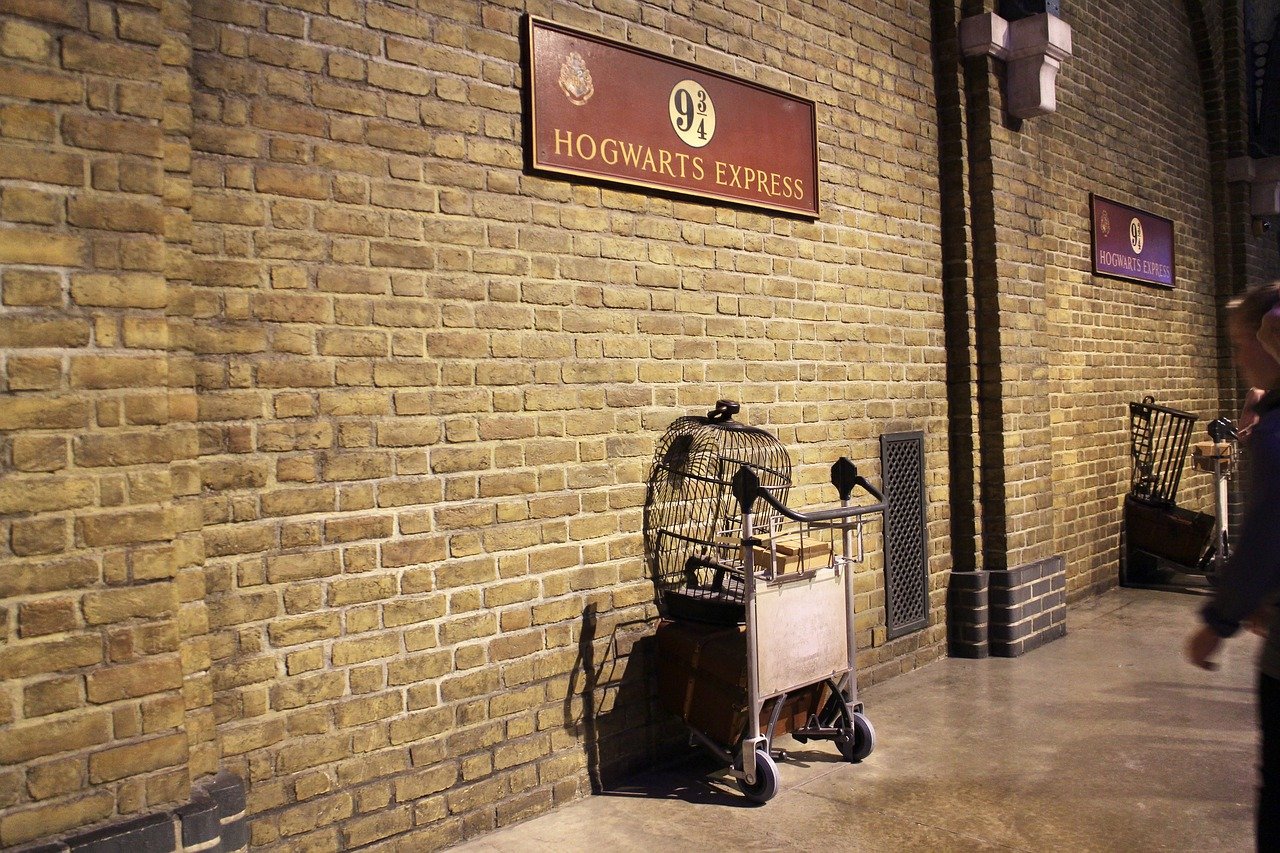
The Royal Family resides in Buckingham Palace in London.
Buckingham Palace serves as the official residence of the British Royal Family, located in the borough of Westminster. The palace holds most of the important state occasions and is often the center of national celebrations and mourning.
It was originally the residence of John Sheffield, 1st Duke of Buckingham and Normanby, from which it takes its name. In 1761, however, King George III purchased the house for Queen Charlotte. It underwent significant renovations and enlargements in the 19th century and became the official residence of the monarchy upon the accession of Queen Victoria in 1837.
Was this page helpful?
Our commitment to delivering trustworthy and engaging content is at the heart of what we do. Each fact on our site is contributed by real users like you, bringing a wealth of diverse insights and information. To ensure the highest standards of accuracy and reliability, our dedicated editors meticulously review each submission. This process guarantees that the facts we share are not only fascinating but also credible. Trust in our commitment to quality and authenticity as you explore and learn with us.
